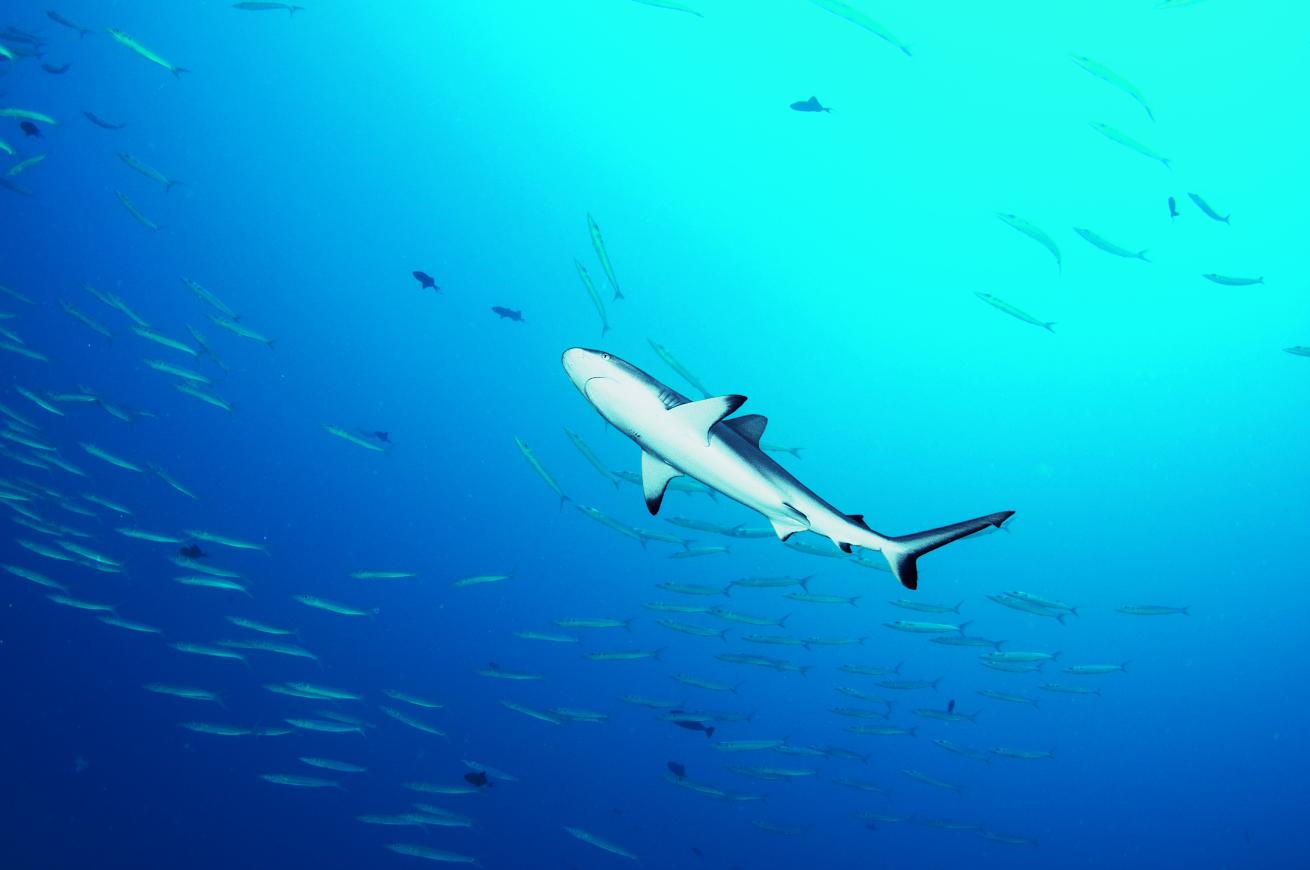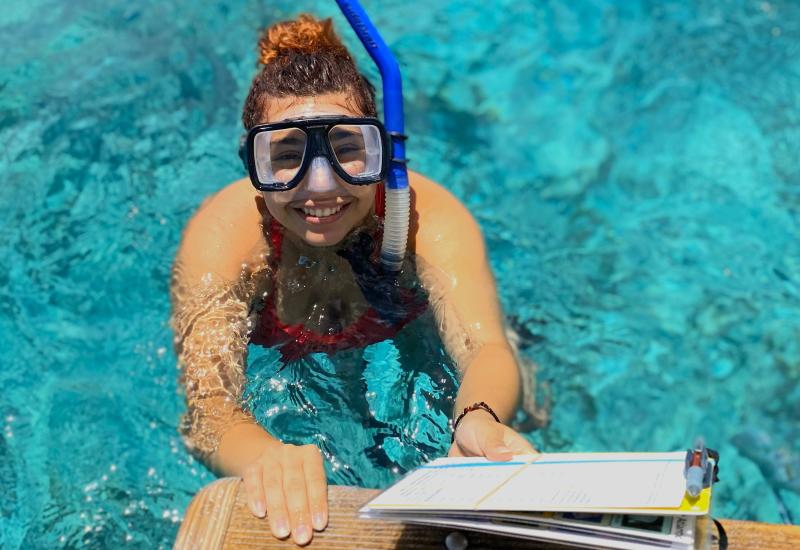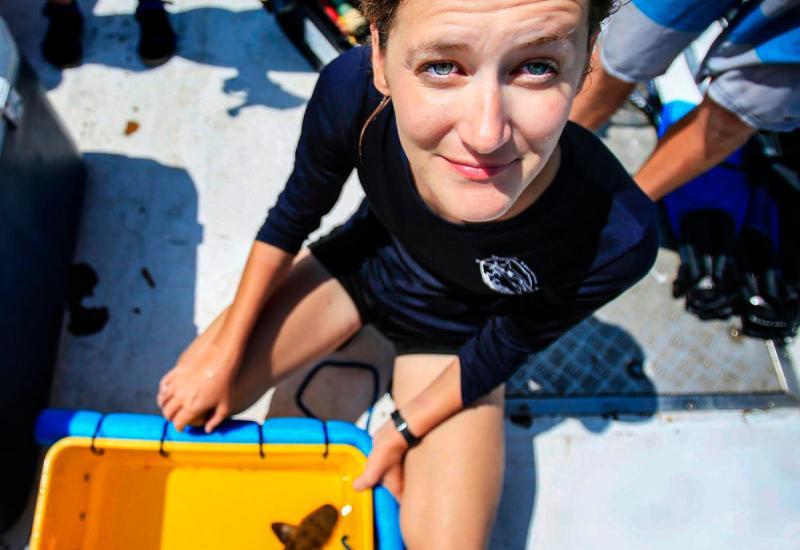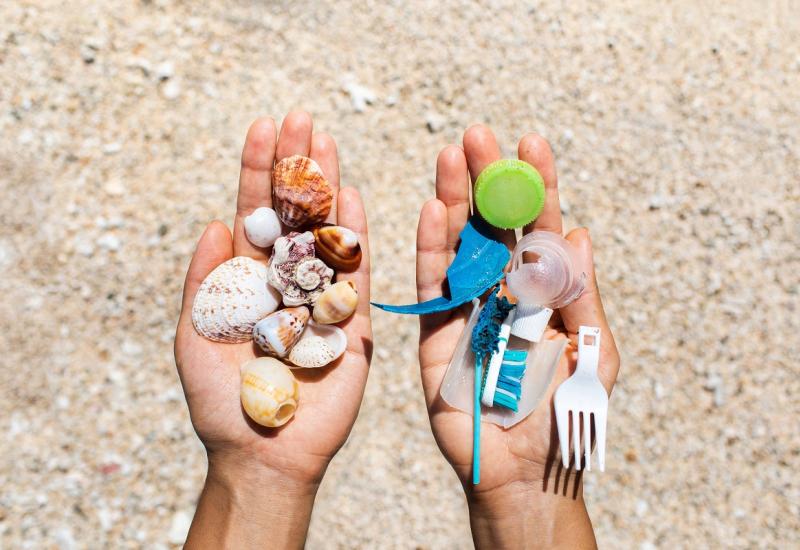Shark Sanctuary

shark
At Blue Corner, divers count sharks and take notes on identifying features for data analysis
Carlos Villoch
Our destination is New Drop-Off, a legendary wall dive in Palau, and Iím staring at the limestone islands that pass in a blur, determined not to lose my lunch. Kenneth Johnny, captain of the Ocean Hunter III, maneuvers the live-aboardís tender with a hoplike progression that reminds me of the 1980s arcade game Frogger. He deftly thrusts the boat from the safety of peak to peak.
The backward roll canít come soon enough, and with it a rush of deep-blue calm. Schooling fusiliers with flickering stripes are like liquid tinsel strung along a coral-clad wall. A hawksbill turtle fins by in no hurry at all. Then Iím reminded why Iím here.
Iíve come to Palau to help the Micronesian Shark Foundation take stock of the countryís shark population. I spot my first subject ó a medium-size blacktip shark ó minutes into the dive. Palauís dizzying biodiversity makes it a must for any serious diver. More important for a shark lover like me, the Micronesian nation is equally revered for its large populations of sharks ó a resource that has finally been awarded official protection.
In September 2009, Palauís president, Johnson Toribiong, signed a law to protect Palauís waters from commercial shark fishing. The law created the Palau Shark Sanctuary, the worldís first such shark sanctuary, and protects an area the size of France, some 237,000 square miles. But policing such a large area with Palauís limited coast-guard resources is difficult, and illegal activities such as longlining and bottom trawling persist.
ìIn eight hours [in 2009], a surveillance plane from Australia spotted close to 70 longliners in Palauan waters,î says Tova Harel Bornovski, owner of Fish ën Fins dive shop. She shows me a photo of a Taiwanese boat intercepted by the Palauan coast guard in 2009 in which the bloodied carcasses of scores of definned sharks are piled like a logjam beside the vessel.
With an eye on drawing attention to the plight of Palauís sharks and learning more about their numbers at the countryís many dive sites, Harel Bornovski and her husband, Navot Bornovski, founded the Micronesian Shark Foundation in 2002 with Johnny and scientists from the Australian Institute of Marine Sciences.
In addition to recording shark numbers during daily dives to send to AIMS for analysis, the MSF tagged 29 gray reef sharks in Palauís waters in recent years. Receivers installed at four popular dive sites, including Blue Corner and Ulong Channel, track the frequency of the tagged sharksí visits and their migration between sites. Harel Bornovski also holds presentations for councils of chiefs and Palauan state legislators to help raise awareness about shark conservation. The MSF implemented educational programs at local elementary schools too.
The data gathering and interpretation is still in its infancy, with results compiled quarterly by AIMS for progressive analysis. While it will take several years before conclusions can be drawn, Harel Bornovski says grass-roots efforts with visiting divers are instrumental to furthering the cause.
To this end, since 2003, Fish ën Fins has hosted the MSFís annual Shark Week event. Itís held each March in Koror to coincide with shark mating season. Divers from around the world participate in daily shark counts, listen to lectures and receive briefings from participating scientists on the dayís data. Highlights from the 2010 Shark Week include seeing scores of gray reef pups and an incredible day at Peleliu, where more than 60 sharks were counted on a single dive. Bull sharks, a tiger shark and a whale shark were also spotted during the week.
For divers who canít make it to Palau during Shark Week, participating in daily counts throughout the year, as Iím here to do, is equally beneficial. Data-collection sheets with categories for recording the species of shark, sex, water temperature and other variables are available for all divers in Palau to use during any given dive.
During one 55-minute dive, I count five whitetips and six gray reef sharks and record my data for the captain. Later, at Ulong Channel, I tally 10 gray reef sharks at the mouth of the channel, where weíre tethered with reef hooks for a full 30 minutes to take in the spectacle. One female reef shark has a hole in the skin near her mouth, a rare identifying feature that I diligently note.
My last dive is a triumphant return to Blue Corner, where I watch 10 whitetips scarfing rainbow runners that a hunting pack of giant trevally chased into the coral. In the blue, six gray reef sharks make passes back and forth.
Back on the boat, my mind is still reeling from the feeding frenzy as I fill out my last data-collection sheet ó one small piece in an imperative patchwork of protection for these great animals. A fine drizzle turns into an all-out assault, and I bury my head in a towel to tough it out, sending my thoughts elsewhere ó to the deep-blue refuge where Palauís top predators rule. Long may they reign.
Protect Sharks One Dive at a Time
- The ninth annual Shark Week will be held March 19-26, 2011, with daily dives and shark counts, data analysis with scientists from AIMS and a gala dinner. Fish ën Fins ( www.fishnfins.com ) offers seven-night packages that include hotel rooms based on double occupancy, daily breakfast and lunch, the gala dinner and five days of diving (two tanks per day) from $1,250 per person.
- When in Palau, request data-collection sheets from Fish ën Fins to keep track of shark sightings during dives. Divers with other operators are also encouraged to take part, and data is gathered year-round.
- Saving the oceansí sharks is a worldwide endeavor. Support other dive destinations dedicated to conservation efforts, such as the Maldives, which followed Palauís lead in March 2010 by banning shark fishing in its waters.
- Boycott restaurants and stores that server shark-fin soup and other shark products. Sold throughout Asia, shark-fin soup is a product of the cruel practice of shark finning and has no nutritional value.

Carlos VillochAt Blue Corner, divers count sharks and take notes on identifying features for data analysis
Our destination is New Drop-Off, a legendary wall dive in Palau, and Iím staring at the limestone islands that pass in a blur, determined not to lose my lunch. Kenneth Johnny, captain of the Ocean Hunter III, maneuvers the live-aboardís tender with a hoplike progression that reminds me of the 1980s arcade game Frogger. He deftly thrusts the boat from the safety of peak to peak.
The backward roll canít come soon enough, and with it a rush of deep-blue calm. Schooling fusiliers with flickering stripes are like liquid tinsel strung along a coral-clad wall. A hawksbill turtle fins by in no hurry at all. Then Iím reminded why Iím here.
Iíve come to Palau to help the Micronesian Shark Foundation take stock of the countryís shark population. I spot my first subject ó a medium-size blacktip shark ó minutes into the dive. Palauís dizzying biodiversity makes it a must for any serious diver. More important for a shark lover like me, the Micronesian nation is equally revered for its large populations of sharks ó a resource that has finally been awarded official protection.
In September 2009, Palauís president, Johnson Toribiong, signed a law to protect Palauís waters from commercial shark fishing. The law created the Palau Shark Sanctuary, the worldís first such shark sanctuary, and protects an area the size of France, some 237,000 square miles. But policing such a large area with Palauís limited coast-guard resources is difficult, and illegal activities such as longlining and bottom trawling persist.
ìIn eight hours [in 2009], a surveillance plane from Australia spotted close to 70 longliners in Palauan waters,î says Tova Harel Bornovski, owner of Fish ën Fins dive shop. She shows me a photo of a Taiwanese boat intercepted by the Palauan coast guard in 2009 in which the bloodied carcasses of scores of definned sharks are piled like a logjam beside the vessel.
With an eye on drawing attention to the plight of Palauís sharks and learning more about their numbers at the countryís many dive sites, Harel Bornovski and her husband, Navot Bornovski, founded the Micronesian Shark Foundation in 2002 with Johnny and scientists from the Australian Institute of Marine Sciences.
In addition to recording shark numbers during daily dives to send to AIMS for analysis, the MSF tagged 29 gray reef sharks in Palauís waters in recent years. Receivers installed at four popular dive sites, including Blue Corner and Ulong Channel, track the frequency of the tagged sharksí visits and their migration between sites. Harel Bornovski also holds presentations for councils of chiefs and Palauan state legislators to help raise awareness about shark conservation. The MSF implemented educational programs at local elementary schools too.
The data gathering and interpretation is still in its infancy, with results compiled quarterly by AIMS for progressive analysis. While it will take several years before conclusions can be drawn, Harel Bornovski says grass-roots efforts with visiting divers are instrumental to furthering the cause.
To this end, since 2003, Fish ën Fins has hosted the MSFís annual Shark Week event. Itís held each March in Koror to coincide with shark mating season. Divers from around the world participate in daily shark counts, listen to lectures and receive briefings from participating scientists on the dayís data. Highlights from the 2010 Shark Week include seeing scores of gray reef pups and an incredible day at Peleliu, where more than 60 sharks were counted on a single dive. Bull sharks, a tiger shark and a whale shark were also spotted during the week.
For divers who canít make it to Palau during Shark Week, participating in daily counts throughout the year, as Iím here to do, is equally beneficial. Data-collection sheets with categories for recording the species of shark, sex, water temperature and other variables are available for all divers in Palau to use during any given dive.
During one 55-minute dive, I count five whitetips and six gray reef sharks and record my data for the captain. Later, at Ulong Channel, I tally 10 gray reef sharks at the mouth of the channel, where weíre tethered with reef hooks for a full 30 minutes to take in the spectacle. One female reef shark has a hole in the skin near her mouth, a rare identifying feature that I diligently note.
My last dive is a triumphant return to Blue Corner, where I watch 10 whitetips scarfing rainbow runners that a hunting pack of giant trevally chased into the coral. In the blue, six gray reef sharks make passes back and forth.
Back on the boat, my mind is still reeling from the feeding frenzy as I fill out my last data-collection sheet ó one small piece in an imperative patchwork of protection for these great animals. A fine drizzle turns into an all-out assault, and I bury my head in a towel to tough it out, sending my thoughts elsewhere ó to the deep-blue refuge where Palauís top predators rule. Long may they reign.
Protect Sharks One Dive at a Time
- The ninth annual Shark Week will be held March 19-26, 2011, with daily dives and shark counts, data analysis with scientists from AIMS and a gala dinner. Fish ën Fins ( www.fishnfins.com ) offers seven-night packages that include hotel rooms based on double occupancy, daily breakfast and lunch, the gala dinner and five days of diving (two tanks per day) from $1,250 per person.
- When in Palau, request data-collection sheets from Fish ën Fins to keep track of shark sightings during dives. Divers with other operators are also encouraged to take part, and data is gathered year-round.
- Saving the oceansí sharks is a worldwide endeavor. Support other dive destinations dedicated to conservation efforts, such as the Maldives, which followed Palauís lead in March 2010 by banning shark fishing in its waters.
- Boycott restaurants and stores that server shark-fin soup and other shark products. Sold throughout Asia, shark-fin soup is a product of the cruel practice of shark finning and has no nutritional value.










